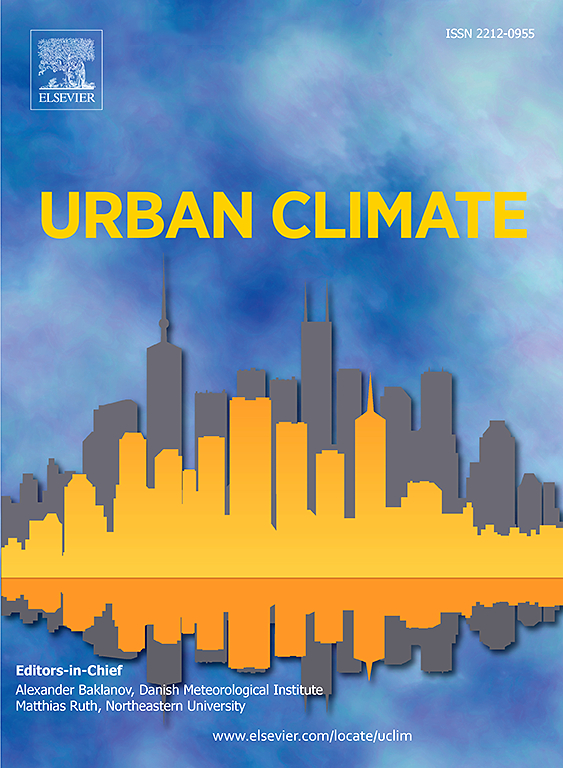Mitigating urban heat island effect: Optimization metrics for road pavement based on entransy dissipation
IF 6
2区 工程技术
Q1 ENVIRONMENTAL SCIENCES
引用次数: 0
Abstract
Mitigating urban heat island (UHI) effect caused by high temperature of urban road, optimizing heat transfer design is essential for urban sustainability. Current design methods rely on experimental designs, which often depend on single metrics such as temperature and heat dissipation, neglecting their varying impacts on heat transfer performance. In this study, through the application of topology optimization technology, the pavements were optimized by temperature and heat dissipation, respectively. Based on the entransy dissipation theory, the variations in convection, surface radiation and heat conduction performance of optimized pavements were analyzed. The relationship between entransy dissipation, temperature and heat dissipation was discussed, and the optimization metrics of entransy dissipation were determined. The results indicated that pavement structure differed when temperature and heat dissipation were used as metrics. The heat conduction entransy dissipation of the upper layer (Gcondup) of the pavement designed with temperature decreased, while the heat conduction entransy dissipation of the middle layer (Gcondmid) and lower layer (Gcondlow) increased. Conversely, the pavement designed with heat dissipation exhibited the opposite trend. A strong correlation was found between the temperature, heat dissipation and the entransy dissipation, with surface radiation entransy dissipation (Gradia) and Gcondup having the most significant influence. Consequently, these were selected as the design metrics. The optimized pavement designed with entransy dissipation exhibited good cooling and heat dissipation performance.

缓解城市热岛效应:基于能量耗散的道路铺装优化指标
缓解城市道路高温造成的城市热岛效应,优化传热设计对城市可持续发展至关重要。目前的设计方法依赖于实验设计,通常依赖于温度和散热等单一指标,而忽略了它们对传热性能的不同影响。本研究通过应用拓扑优化技术,分别从温度和散热两个方面对路面进行优化。基于能量耗散理论,分析了优化后路面对流、表面辐射和导热性能的变化规律。讨论了热耗散与温度、散热的关系,确定了热耗散的优化指标。结果表明,以温度和散热为指标时,路面结构存在差异。随着温度的升高,路面上层(Gcondup)的导热耗散减小,中层(Gcondmid)和下层(Gcondlow)的导热耗散增大。相反,采用散热设计的路面表现出相反的趋势。温度、热耗散与能量耗散有较强的相关性,其中地表辐射能量耗散(gradient)和Gcondup的影响最为显著。因此,这些被选为设计指标。采用能量耗散设计的优化路面具有良好的冷却散热性能。
本文章由计算机程序翻译,如有差异,请以英文原文为准。
求助全文
约1分钟内获得全文
求助全文
来源期刊

Urban Climate
Social Sciences-Urban Studies
CiteScore
9.70
自引率
9.40%
发文量
286
期刊介绍:
Urban Climate serves the scientific and decision making communities with the publication of research on theory, science and applications relevant to understanding urban climatic conditions and change in relation to their geography and to demographic, socioeconomic, institutional, technological and environmental dynamics and global change. Targeted towards both disciplinary and interdisciplinary audiences, this journal publishes original research papers, comprehensive review articles, book reviews, and short communications on topics including, but not limited to, the following:
Urban meteorology and climate[...]
Urban environmental pollution[...]
Adaptation to global change[...]
Urban economic and social issues[...]
Research Approaches[...]
 求助内容:
求助内容: 应助结果提醒方式:
应助结果提醒方式:


